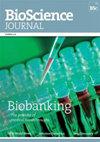单核细胞-淋巴细胞、中性粒细胞-淋巴细胞和血小板-淋巴细胞比率作为临床登革热严重程度的炎症生物标志物
IF 0.6
4区 农林科学
Q3 AGRICULTURE, MULTIDISCIPLINARY
引用次数: 0
摘要
文献将单核细胞-淋巴细胞(MLR)、中性粒细胞-淋巴细胞(NLR)和血小板-淋巴细胞(PLR)比率描述为预后生物标志物。然而,在登革热感染的情况下,患者的临床管理和非特异性实验室检测决定了预后。因此,本研究分析了作为登革热感染预后生物标志物的 MLR、NLR 和 PLR。我们的研究基于 2012 年至 2013 年期间巴西登革热患者的临床队列。在 193 名患者中,164 人(85.0%)被归类为登革热(DF),19 人(9.8%)被归类为登革出血热(DHF),10 人(5.2%)被归类为中间型 DF/DHF。DHF 病例与 MLR > 0.13(OR:5.72,95% CI:1.28-25.60,p < 0.05)和 PLR ≤ 80.68(OR:4.26;95% CI 1.60-11.33;p < 0.05)明显相关。我们的结果表明,MLR 升高和 PLR 降低表明临床状况恶化的可能性增大。本文章由计算机程序翻译,如有差异,请以英文原文为准。
Monocyte-lymphocyte, neutrophil-lymphocyte, and platelet-lymphocyte ratios as inflammatory biomarkers of clinical dengue severity
The literature describes monocyte-lymphocyte (MLR), neutrophil-lymphocyte (NLR), and platelet-lymphocyte (PLR) ratios as prognostic biomarkers. However, in the case of dengue infection, patient clinical management and nonspecific laboratory tests determine the prognosis. Therefore, this study analyzed MLR, NLR, and PLR as prognostic biomarkers of dengue infection. Our study was based on a clinical cohort of dengue patients in Brazil between 2012 and 2013. From 193 patients, 164 (85.0%) were classified as dengue fever (DF), 19 (9.8%) as dengue hemorrhagic fever (DHF), and 10 (5.2%) as intermediate DF/DHF. DHF cases were significantly associated with MLR > 0.13 (OR: 5.72, 95% CI: 1.28-25.60, p < 0.05) and PLR ≤ 80.68 (OR: 4.26; 95% CI 1.60-11.33; p < 0.05). Our results suggest that MLR increase, and PLR decrease indicate a higher likelihood of worsening the clinical status.
求助全文
通过发布文献求助,成功后即可免费获取论文全文。
去求助
来源期刊

Bioscience Journal
Agricultural and Biological Sciences-General Agricultural and Biological Sciences
CiteScore
1.00
自引率
0.00%
发文量
90
审稿时长
48 weeks
期刊介绍:
The Bioscience Journal is an interdisciplinary electronic journal that publishes scientific articles in the areas of Agricultural Sciences, Biological Sciences and Health Sciences. Its mission is to disseminate new knowledge while contributing to the development of science in the country and in the world. The journal is published in a continuous flow, in English. The opinions and concepts expressed in the published articles are the sole responsibility of their authors.
 求助内容:
求助内容: 应助结果提醒方式:
应助结果提醒方式:


